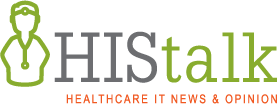Are HCC Codes and RAF Scores Enough?
By Sara Pastoor, MD
Sara Pastoor, MD, MHA is director of primary care advancement for Elation Health of San Francisco, CA.

The introduction of electronic health records (EHRs) has ushered in an age of data-driven capabilities that hold great potential to alter healthcare, both as an industry and at the front lines of care delivery. EHRs have apparently disrupted everything, for better or for worse. Well known are the complaints that the EHR has inserted a wall of hardware and electrons between doctor and patient, not to mention the documentation burden that has often decreased revenue by slowing the pace of care and adding hours to a physician’s work week. Yet EHRs capture, organize, and store large volumes of health information that can now be leveraged in unprecedented ways to help payers, providers, and patients all win.
One of the most transformational results of this data and information boom in healthcare is the ability to analyze the medical complexity of a patient population and use that analysis to inform resourcing and care. Sicker patients need more and different things than healthier patients do. Historically, a primary care doctor was paid relatively the same amount of money whether caring for a patient with one chronic condition or five. Today, the data encoded into EHRs can be leveraged in specific payment arrangements to justify higher reimbursement rates for sicker patient populations, with bonuses for delivering better care through reporting on defined quality metrics.
The most common example of this involves Hierarchical Condition Categories, or HCCs, which are part of a model for risk stratification originally designed by CMS in 2004 to predict future healthcare costs for patients. Each condition category, which is based on ICD-10 codes, is combined with a set of demographics (gender/age) to assign patients a Risk Adjustment Factor or RAF score. RAF scores are based on demographics and disease burden (determined by ICD-10 codes), and are used to adjust quality and cost metrics by accounting for differences in patient complexity. Using this scoring system, payers in capitated payment arrangements can provide higher payments to primary care practices with more complex patient populations. Payers can also use these scores to determine performance-based metrics and bonuses, by identifying patients with specific expected care needs based on gender, age, and chronic condition.
In value-based payment models, RAF scores work pretty well for getting paid. However, the concept of risk adjustment and stratification carries much greater potential beyond cost estimation and reimbursement structures. It carries tremendous power to improve outcomes and decrease total cost of care. While it is critical to compensate care teams for the resources required to properly manage complex patients, more enhanced risk adjustment models based on predictive analytics enable clinical interventions that change lives.
Consider my patient, who we’ll call Albert. Albert is a 72-year-old with diabetes, hypertension, obesity, obstructive sleep apnea, and chronic venous insufficiency. His wife died after a sudden and short battle with cancer. His diabetes and other conditions were previously well controlled, but he had one prior episode of venous leg ulcer complicated by cellulitis requiring a hospital admission in the past year. Following the death of his wife, Albert started to forget to take his medications, use his CPAP device for his sleep apnea, and wear his compression stockings for his venous insufficiency. His bereavement made it difficult for him to cope, and he began to neglect his care.
Additionally, his wife had been the one to check his feet for calluses, wounds, or infections since he could not reach them, an important daily ritual for diabetics. Without his wife to cook for him, he began dining out more often, frequently defaulting to fast food. His weight increased, his chronic conditions spiraled out of control, and he developed a diabetic foot ulcer that went unnoticed until infection had invaded the bone, eventually requiring a partial foot amputation.
Albert’s diagnoses of diabetes, hypertension, obesity, sleep apnea, and chronic venous insufficiency make up a common constellation of conditions. Every family physician in America manages many patients like Albert. Yet Albert’s ICD-10 codes, age, and gender do not alert us to his quite predictable and extremely high risk of at least one bad outcome in the very near future. Albert’s RAF score is equal to that of every other patient with his same demographics and ICD-10 profile, but Albert is a ticking time bomb. With extra support and appropriate interventions, Albert’s diabetic foot ulcer, osteomyelitis, and subsequent partial foot amputation were entirely preventable, if only we had known.
HCC codes and RAF scores are a blunt instrument for managing a population. Patient complexity and the corresponding patient needs are far more nuanced than ICD-10 codes and demographics would suggest. Determining which patients need what interventions is a delicate and sophisticated science. Furthermore, the CMS HCC/RAF model does not generalize well beyond the Medicare population, and there is a need to manage clinical risk across all types of patients and ages.
To achieve the level of insight needed in a risk adjustment model for targeted population management, the model needs to factor in a number of additional determinants. My suggestions include functional status, severity of illness, the interplay between diagnoses and treatments, historical utilization patterns, pharmaceutical costs and risks, number of subspecialists involved, and social determinants of health. This more nuanced risk stratification serves to better inform the true risk of each patient, producing actionable information clinicians can use to intervene and make a difference for those who need it most.
In Albert’s case, his combined conditions of diabetes, obesity, and chronic venous insufficiency dramatically increased his risk of chronic limb ulceration and corresponding complications due to the interplay between these three conditions. According to scientific evidence, his prior history of venous leg ulcer with infection placed him at even higher risk of repeat hospitalization for a similar event. His bereavement, a pivotal life event, predictably increased his risk of worsening severity of illness for his baseline conditions. Exacerbation of his sleep apnea due to poor CPAP compliance predictably worsened his diabetes, hypertension, and obesity, even if he didn’t struggle with medication compliance and worsening of his diet. This complex interplay of factors had a dramatic effect on Albert’s health status, not reflected in a RAF score.
Sophisticated risk adjustment models are very effective at plucking patients like Albert out of the crowd and identifying him as high risk/high need. Evidence-based clinical interventions could very likely have spared Albert both his foot and significant mental anguish, also saving his health plan a chunk of change. If we apply this illustration to thousands or even millions of patients, the potential impact to the healthcare system and more importantly to society is staggering.
I envision a world in which the EHR has an integrated advanced risk adjustment model that alerts care teams to patients like Albert. Running in the background of an EHR platform, these analytic models can identify patients who are at highest risk of a health crisis and drive actionable information into the primary care workflow where care teams can not only intervene, but also capture their work for measuring, reporting, and follow up. This is a powerful intersection between technology and the physician-patient relationship for which rudimentary HCC/RAF coding falls short.
Any patient would be grateful to avoid hospitalization or a trip to the emergency room, but the benefits of such analytic tools go much further. This is the Quadruple Aim in action, with meaningful impacts to patient experience, provider experience, outcomes, and cost of care. In a payment arrangement involving shared risk, primary care is positioned to drastically reduce total costs of care with such technology while reaping significant financial benefits for doing this work. Often, the extra clicks and associated tasks related to EHR alerts for HCC reporting feel like administrivia, lacking direct clinical impact to the patient. Alerts that directly result in meaningful clinical intervention feel like time well spent. Payers win, providers win, and patients win.
Albert had interacted with the healthcare system both while his wife was dying and after his bereavement. His history of hospitalization for venous leg ulceration sat right there in his claims data. His poor CPAP compliance was transmitted wirelessly to the DME company managing the settings on his device. The information necessary to predict Albert’s escalating risk was known, but the systems and processes were not in place to identify his risk and notify someone who could do something about it. I learned about his unfortunate health debacle when he came to me with an advanced foot ulcer, well past the window of opportunity for meaningful intervention.
I have so many memories of patients over the decades for whom the trigger(s) leading to the trip down disaster lane toward catastrophic health outcomes only became obvious in retrospect, because we didn’t know what we should have known, so we couldn’t do what we should have done. We have the technology to do better. When we start putting that technology in the hands of primary care, lives will change.




















Sounds reasonable, until you look at the Silicon Valley experience. Silicon Valley grew like a weed precisely because employees could…